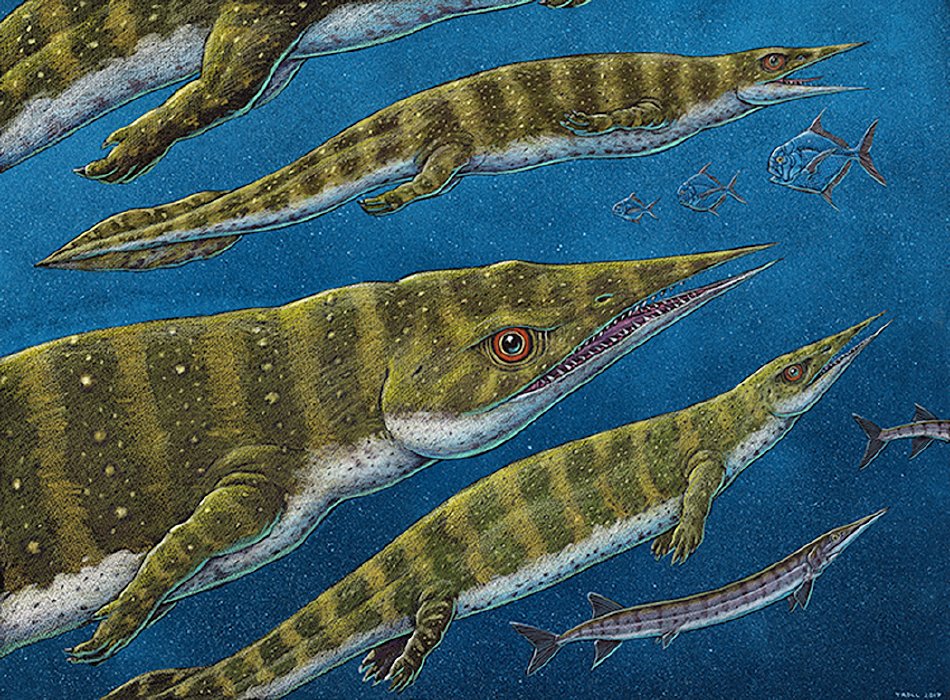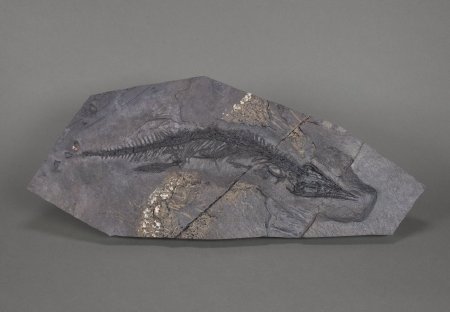Cruisin' the Fossil Coastline
Thalattosaur Discovery
In 2011, the fossilized skeleton of a very rare marine reptile known as a thalattosaur was found in the Triassic rocks of an island near Kake, Alaska. It was given name Gunakadeit joseeae on the recommendation of Sealaska Heritage Institute's Council of Tribal Scholars along with the approval of Tlingit Elders from Kake and others. Gunakadeit is a sea monster from Tlingit oral traditions that brings good fortune to those who encounter it. It's the first time a Tlingit name has been used for a scientific name given to a fossil.
This five-foot long sea creature lived in the shallow coastal waters of the late Triassic about 215 million years ago (mya). There is a possibility that this could be a juvenile and that the adults could have been substantially larger. It's thought to have used its pointy snout to probe into cracks and crevices for soft bodied prey. The needle-nosed sea creature is Alaska's most complete Mesozoic vertebrate fossil recovered to date. The species is one of the last of its kind to swim the seas before thalattosaurs mysteriously died out around 200 mya.
This five-foot long sea creature lived in the shallow coastal waters of the late Triassic about 215 million years ago (mya). There is a possibility that this could be a juvenile and that the adults could have been substantially larger. It's thought to have used its pointy snout to probe into cracks and crevices for soft bodied prey. The needle-nosed sea creature is Alaska's most complete Mesozoic vertebrate fossil recovered to date. The species is one of the last of its kind to swim the seas before thalattosaurs mysteriously died out around 200 mya.



